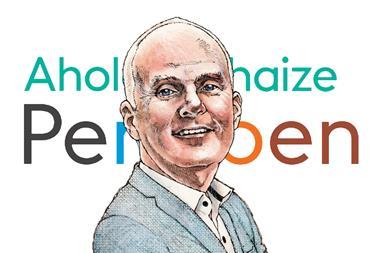Everyone wants to be loved, even the masters of the private equity universe. This year's Super Return conference in Frankfurt saw the great and the good of the industry undertaking the usual networking and listening to an eclectic range of speakers, but also to engage in some serious navel gazing, pondering on the image they present to the outside world.
Despite the word private in the very naming of the asset class, the problem as David Bonderman, the founding partner of Texas Pacific Group (TPG), said, is that you can not pick up a paper these days without something being written about private equity, and not usually complimentary.
Stephen Schwartzman, CEO of the mega fund manager, the Blackstone group declared that what he worries about "is the political stuff going on" moaning that returns are good but "there are people trying to interfere".
Despite misgivings on public perception, the industry was also in a self-congratulatory mood with 2007 set to be another strong year.
Robin Painter of Proskauer Rose LLP pointed out that the more than $215bn (€162bn) raised in the US, beat the $178bn record set at the height of the TMT boom in 2000.
Significantly, at 322 the number of funds in 2006 was almost half the 629 in 2000, and eight funds accounted for 43% of the total capital raised. In the US venture space, two funds accounted for 20% of the capital.
However, defining a mega fund has proved changeable, as yesterday's mega fund becomes today's mid.
But there is a major difference between the types of public-to-private deals that are often being targeted by today's mega funds, and the typical mid sized deal seen over the last 20 years. As Nigel Doughty of Doughty Hanson pointed out, normally when a private equity firm buys a business, the shareholders don't want to own it. With a public-to-private transaction, you are buying at a premium, so how do you generate excess returns?
Moreover, as Kathleen Brown of HarbourVest asked, when buying businesses of $30-40bn, does that limit exits? In the mid market, a firm can sell to another private equity firm if public markets are not attractive.
The answer appears to be, according to Blackstone's Schwartzman, that you can break a company into pieces and sell the parts.
The key factor driving the private equity marketplace is what is going on in the debt markets. TPG's Bonderman made a comparison of two similar deals, one undertaken in 1999, with a 17% coupon and 8% equity while the recent 2006 transaction had an 11% coupon and no equity. In addition, while seven years ago, there were 60 non-bank participants in loans, there are now 600.
Another controversial trend is the listing of private equity vehicles, most notably by KKR. Fisher argued that as the private equity market matures, more people want exposure.
Public markets allow access to a whole new universe of investors such as retail, high net worth individuals and other institutions without developed private equity programmes.
However, BlackStone's Schwartzman said that the KKR deal did a great job and raised $5bn and destroyed the market for everyone else.
He added that $400bn was raised for private equity in the year so the $5bn was not significant. So to take on the costs and uncertainty of execution for a public vehicle for less than $1bn of new money is not worth it and for KKR, a lot of the $5bn would have gone in anyway without a listing.
Private equity clearly has a lot of myths associated with it, which the media invariably latch onto. Jonathan Nelson of Providence Equity Partners sees five myths that are incorrect: Myth one is that private equity is private. But investments are increasingly transparent and many transactions have public bonds, which have disclosure requirements.
Myth two is that private equity firms are star driven boutiques. But much of the investment is not flowing into small firms, but large ones with hundreds of people and committees etc.
While brand names such as TPG, Blackstone and Providence, were founded by stars and are still run by them, they are now fully staffed with proper infrastructure. Myth three is that firms are institutions, which turns myth two on its head. Many firms are still young firms driven by founders.
Myth four is that private equity is easy. All you need in a new transaction is leverage, cut costs, pay a dividend and then flip it.
But quick successes are outliers, which the media latch onto and give rise to the myth that private equity is all about financial engineering. In today's world, you need to create value and work on the income statement as well as the balance sheet. Finally, myth five is that there is a private equity bubble that is about to burst, just like the 1990s telecom boom. But equity participation is much higher now at 33% compared to 23% 10 years ago and 7% 20 years ago.
Perhaps the issue that is of most concern to the outside world is what was least discussed at the conference, namely the fee structure and huge dispersion of returns in the industry.












No comments yet